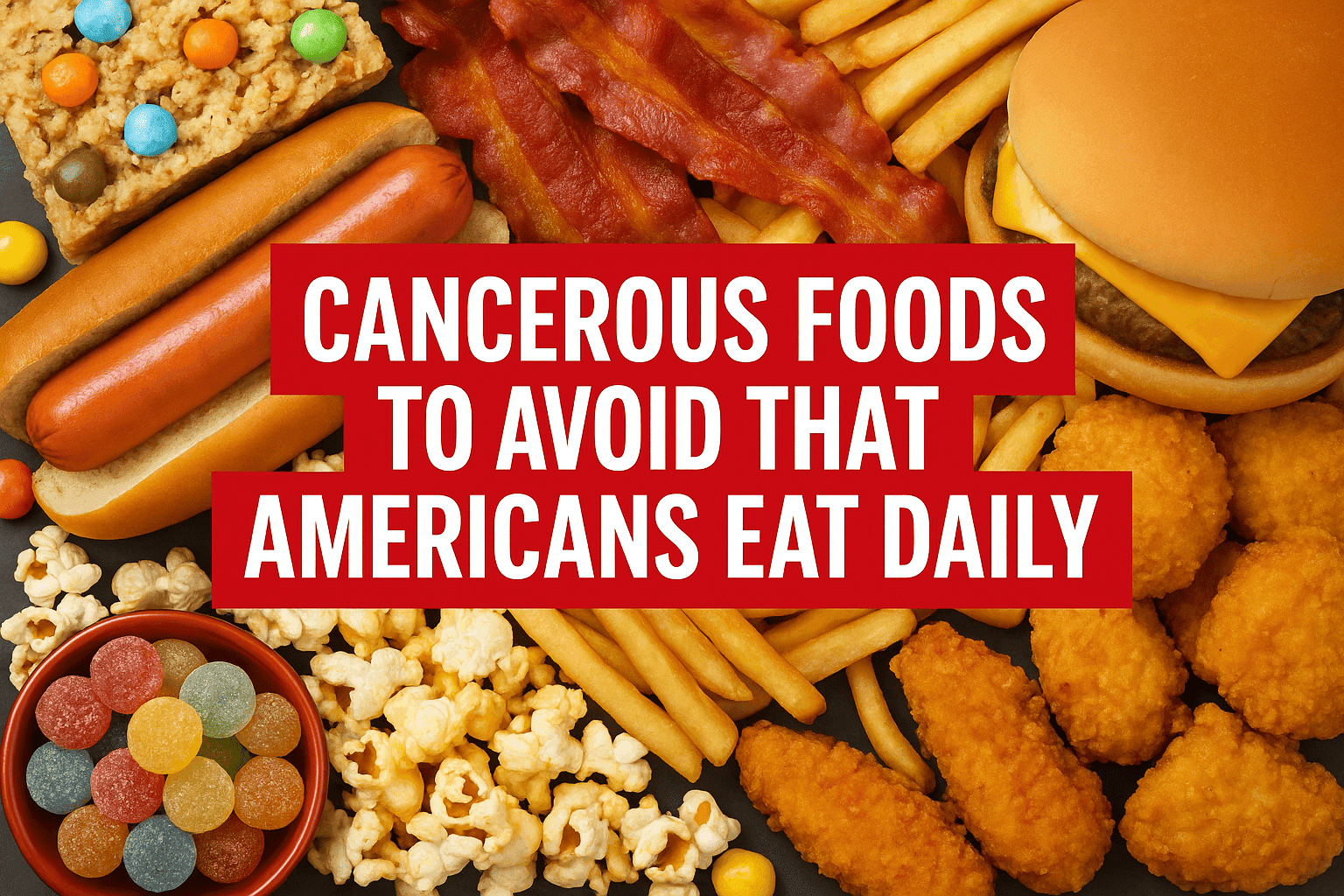Everyday Foods That Could Be Harming Your Health — Without You Even Knowing
In the rush of daily life, it’s easy to grab convenient, tasty foods without giving much thought to what’s actually in them. But what if some of your favorite snacks or go-to meals are quietly increasing your cancer risk? From processed meats to sugary cereals, certain everyday items in the American diet have been linked to serious health concerns — including cancer. In this article, we’ll break down the most common cancer-causing foods hiding in plain sight and explain why it might be time to rethink what’s on your plate.
1. Processed Meats
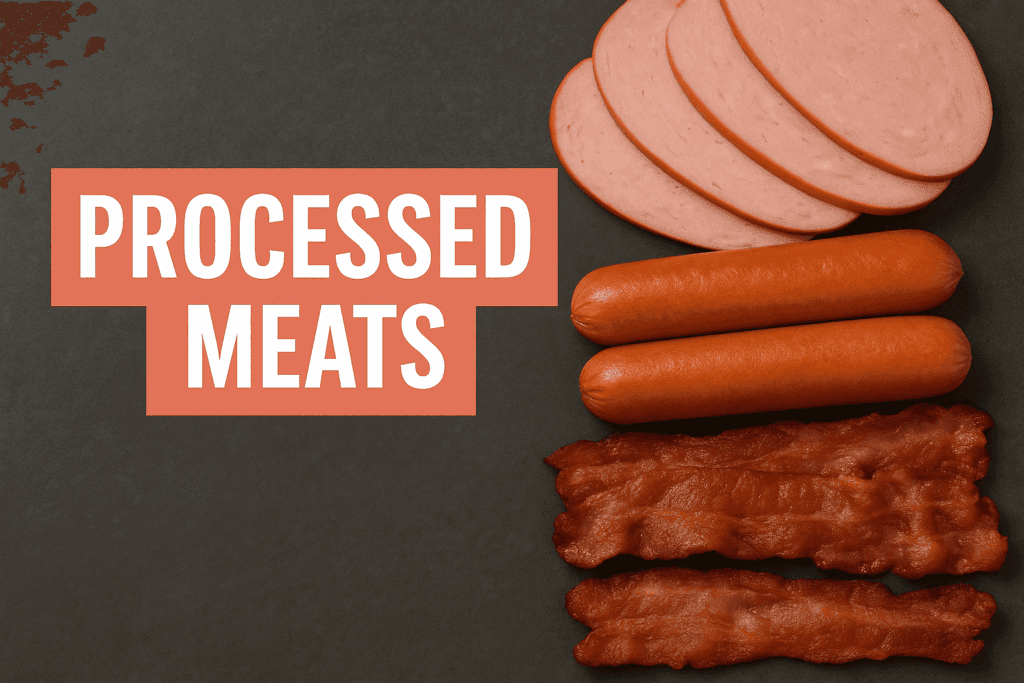
Includes: Bacon, sausages, deli meats, hot dogs.
The World Health Organization classifies processed meats as Group 1 carcinogens, the same category as tobacco. These meats are often treated with nitrates and nitrites — preservatives that can turn into cancer-causing compounds in your body. Regular consumption has been linked to colorectal and stomach cancers.
👉 Swap With: Fresh, lean meats like chicken or turkey, or plant-based proteins.
2. Sugary Drinks and Refined Sugars
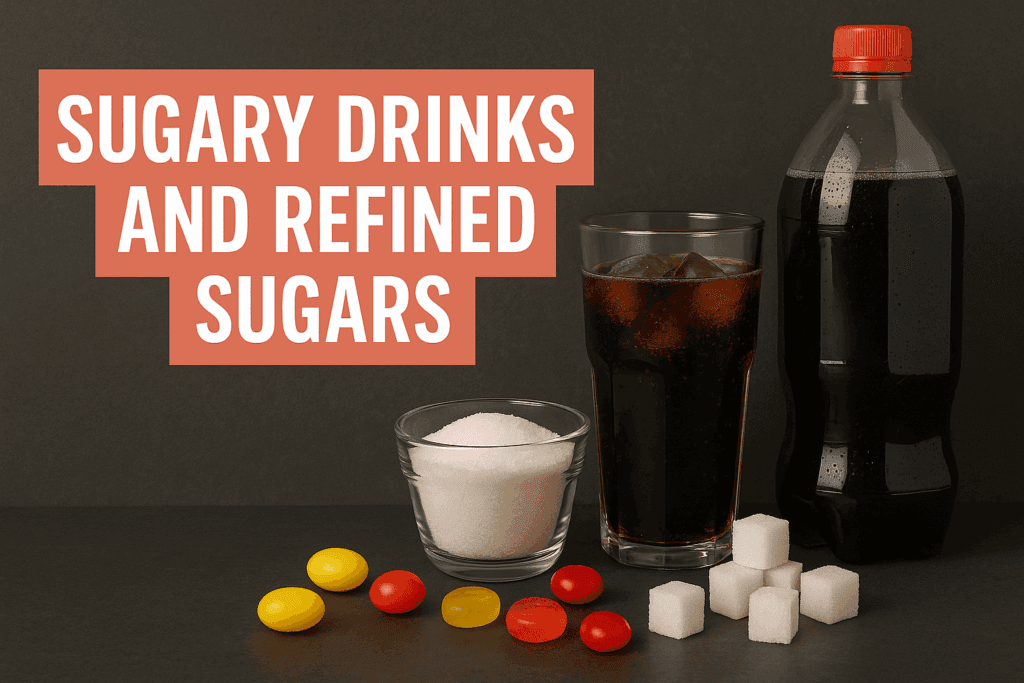
Includes: Soda, energy drinks, sweetened teas, candy.
Refined sugar feeds inflammation, spikes insulin levels, and contributes to obesity — all of which are risk factors for several cancers, including breast and pancreatic cancer. High-fructose corn syrup (commonly found in sodas) is especially concerning.
👉 Swap With: Water with lemon, unsweetened teas, or fruit-infused water.
3. Artificial Additives & Preservatives
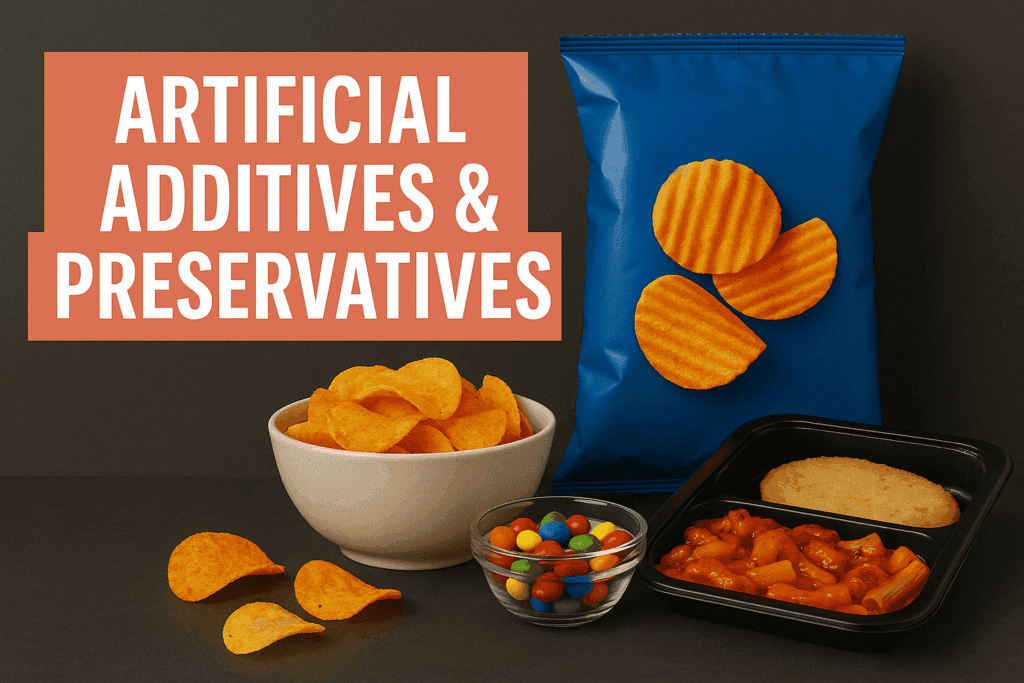
Includes: Packaged snacks, frozen dinners, flavored chips.
Additives like BHA, BHT, and artificial colors (like Red 40 or Yellow 5) have raised red flags for their potential carcinogenic effects in animal studies. While still allowed in U.S. food, many are banned in Europe.
👉 Swap With: Whole foods and snacks with short, recognizable ingredient lists.
4. Fast Food & Deep-Fried Foods

Includes: Fries, fried chicken, onion rings, burgers.
These foods are often cooked in reused oils at high temperatures, creating acrylamide — a possible carcinogen. Combined with high fat and salt, they also contribute to chronic inflammation and obesity.
👉 Swap With: Baked or air-fried options, homemade meals.
5. Microwave Popcorn

Danger Zone: The lining of the bag.
Some microwave popcorn bags are lined with chemicals like perfluorooctanoic acid (PFOA), which has been linked to several types of cancer. Artificial butter flavoring has also been flagged as potentially hazardous.
👉 Swap With: Air-popped popcorn using organic kernels.
6. Farmed Fish (Especially Salmon & Tilapia)

Farmed fish are often raised in crowded conditions, treated with antibiotics, and sometimes dyed to enhance color. These factors can increase cancer-causing contaminants like PCBs (polychlorinated biphenyls).
👉 Swap With: Wild-caught salmon or smaller, low-mercury fish like sardines.
7. Hydrogenated Oils (Trans Fats)

Found In: Packaged cookies, margarine, pastries.
Trans fats have been shown to increase inflammation and are linked to heart disease and certain cancers. The FDA has banned artificial trans fats, but small amounts still sneak into processed foods under different names.
👉 Swap With: Olive oil, avocado oil, or organic butter.
8. White Flour and Refined Carbs
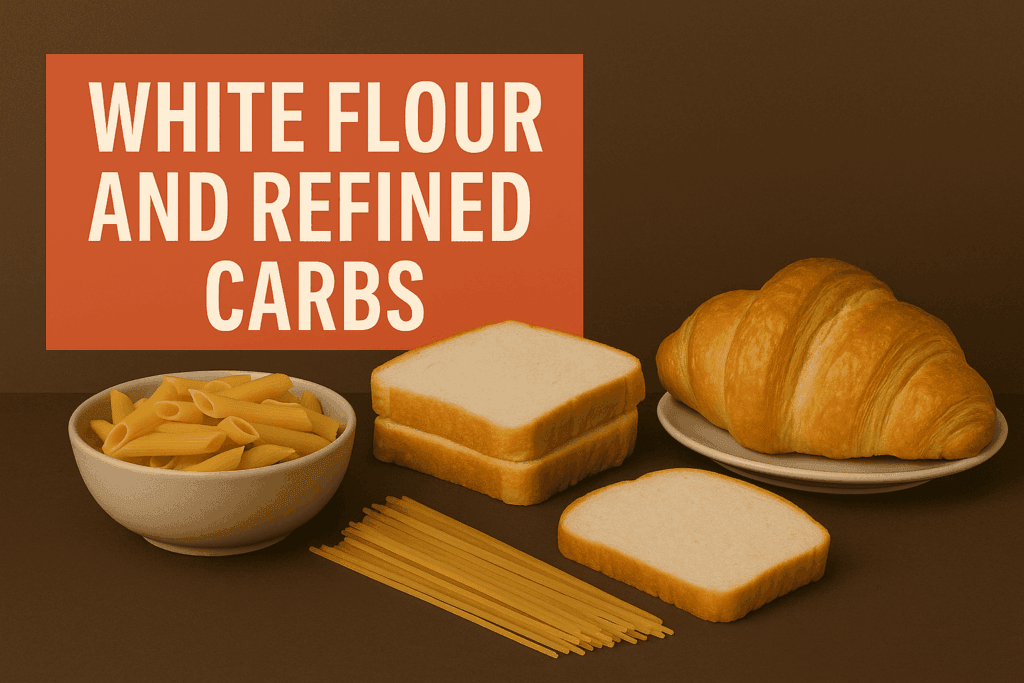
Stripped of fiber and nutrients, white flour spikes blood sugar and contributes to obesity, which is a known cancer risk factor. Common sources include white bread, pasta, and pastries.
👉 Swap With: Whole grains like oats, quinoa, or sprouted bread.
9. Non-Organic Produce with High Pesticides

The Environmental Working Group’s “Dirty Dozen” list includes strawberries, spinach, apples, and grapes — produce often found with high levels of pesticide residues, some of which are linked to cancer.
👉 Swap With: Organic versions of high-risk fruits and vegetables.
Conclusion: A Few Changes Can Make a Big Difference
You don’t have to overhaul your diet overnight. But being aware of what you’re putting in your body is a powerful first step. Start by reading labels, cooking more at home, and making simple swaps where you can. Your long-term health — and your family’s — is worth it.
